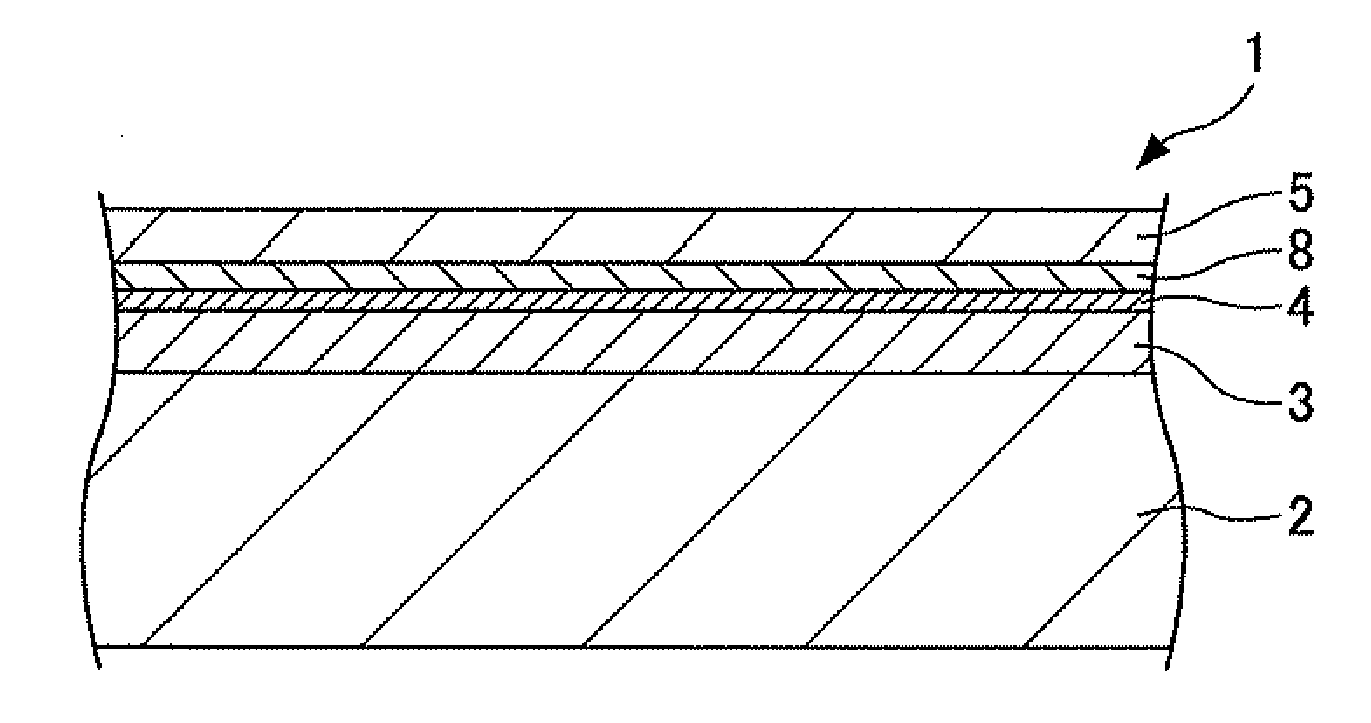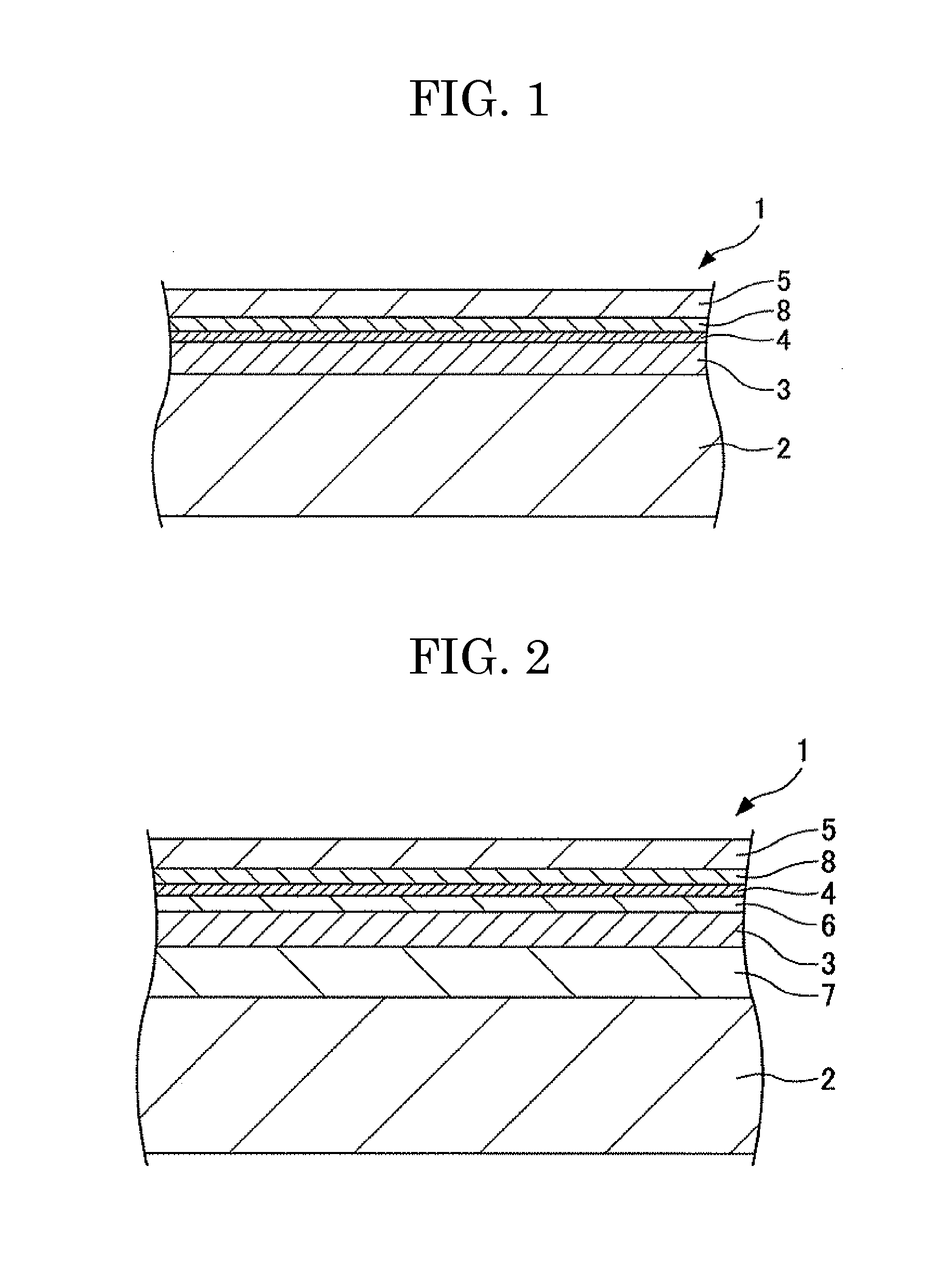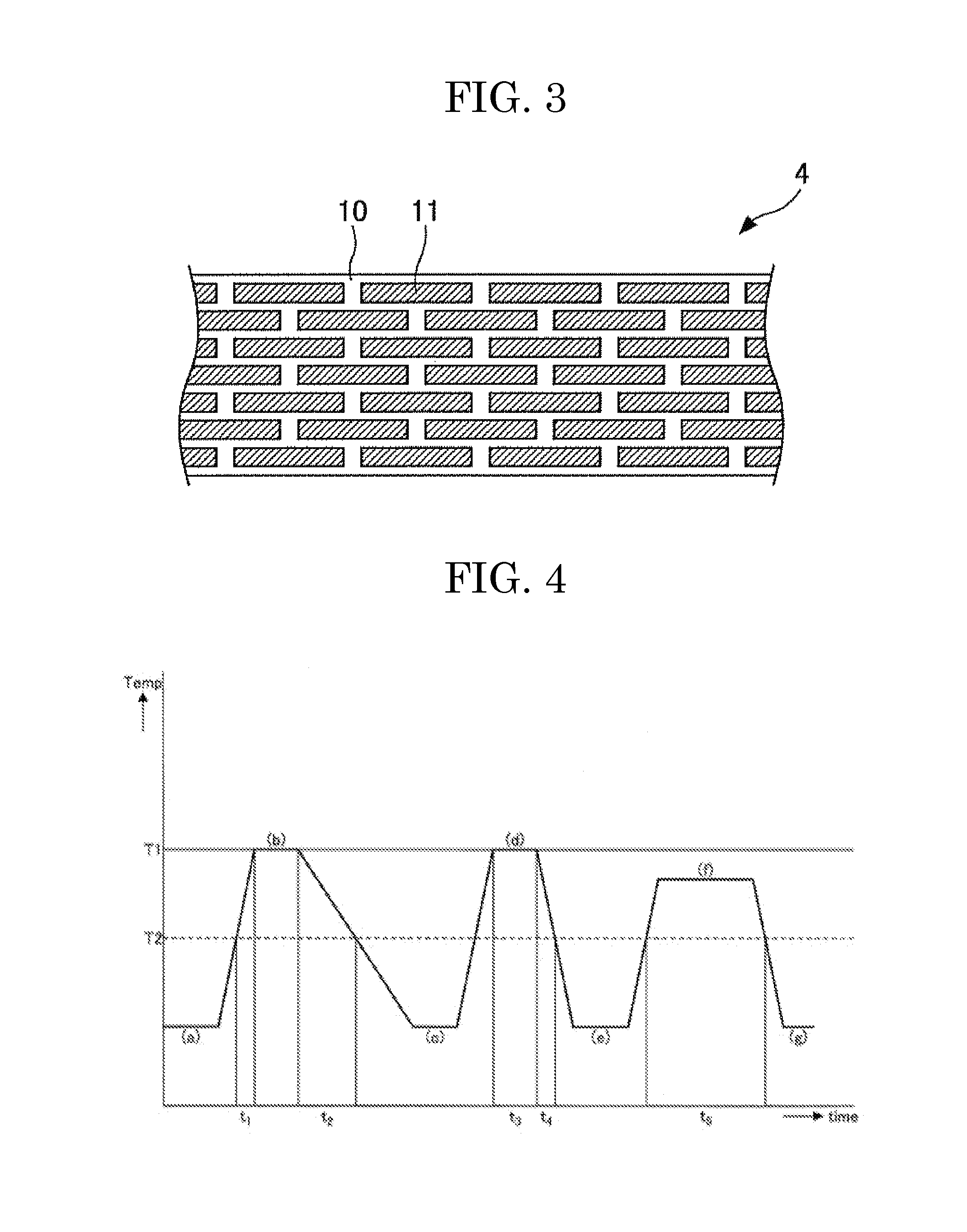Reversible thermosensitive recording medium and reversible thermosensitive recording member
a recording medium and thermosensitive technology, applied in thermography, printing, duplicating/marking methods, etc., can solve the problems of inability to delete once-recorded images, cracks are more likely to occur, durability decreases, etc., and achieve excellent crack resistance, durability, and head residue resistance.
- Summary
- Abstract
- Description
- Claims
- Application Information
AI Technical Summary
Benefits of technology
Problems solved by technology
Method used
Image
Examples
first embodiment
[0234]FIG. 1 shows the configuration of a reversible thermosensitive recording medium according to the first embodiment of the present invention. FIG. 1 is a schematic, partial cross-sectional view showing a reversible thermosensitive recording medium according to the present invention. As shown in FIG. 1, in the reversible thermosensitive recording medium 1, on a surface of a sheet-like support 2, a reversible thermosensitive recording layer 3, a gas barrier layer 4, a primer layer 8, and a protective layer 5 are stacked in that order.
[0235]The reversible thermosensitive recording layer 3 is stacked in such a way that the lower surface of the reversible thermosensitive recording layer 3 is in contact with the support 2 having sufficient gas barrier properties, and the upper surface is covered with the gas barrier layer 4, thereby keeping both surfaces from being in direct contact with the outside air. In principle, all that is required is for the reversible thermosensitive recordin...
second embodiment
[0236]FIG. 2 shows the configuration of a reversible thermosensitive recording medium according to the second embodiment of the present invention. FIG. 2 is a schematic, partial cross-sectional view showing a reversible thermosensitive recording medium according to the present invention. In a reversible thermosensitive recording medium 1 of the second embodiment shown in FIG. 2, an under layer 7, which is high in thermal insulation, is stacked between a reversible thermosensitive recording layer 3 of the reversible thermosensitive recording medium 1 and a support 2.
third embodiment
[0237]The reversible thermosensitive recording medium of the present invention may be attached to another medium via an adhesive layer. Alternatively, a back coat layer may be provided on one side (back surface) of a support such as PET film; on the opposite side of the back coat layer, a release layer that is used in a thermal transfer ribbon may be provided; a reversible thermosensitive recording layer may be provided on the release layer; on a surface, a resin layer capable of transfer onto a resin film or PET film may be further provided; and the transfer may be carried out with a thermal transfer printer. The reversible thermosensitive recording medium of the present invention may be processed into a sheet or card. The reversible thermosensitive recording medium can be processed so as to have an arbitrary shape. Moreover, a printing process may be performed on the top or back surface of the reversible thermosensitive recording medium. When being processed into a card, the rever...
PUM
| Property | Measurement | Unit |
|---|---|---|
| elongation | aaaaa | aaaaa |
| glass transition temperature | aaaaa | aaaaa |
| elongation | aaaaa | aaaaa |
Abstract
Description
Claims
Application Information
 Login to View More
Login to View More - R&D
- Intellectual Property
- Life Sciences
- Materials
- Tech Scout
- Unparalleled Data Quality
- Higher Quality Content
- 60% Fewer Hallucinations
Browse by: Latest US Patents, China's latest patents, Technical Efficacy Thesaurus, Application Domain, Technology Topic, Popular Technical Reports.
© 2025 PatSnap. All rights reserved.Legal|Privacy policy|Modern Slavery Act Transparency Statement|Sitemap|About US| Contact US: help@patsnap.com



